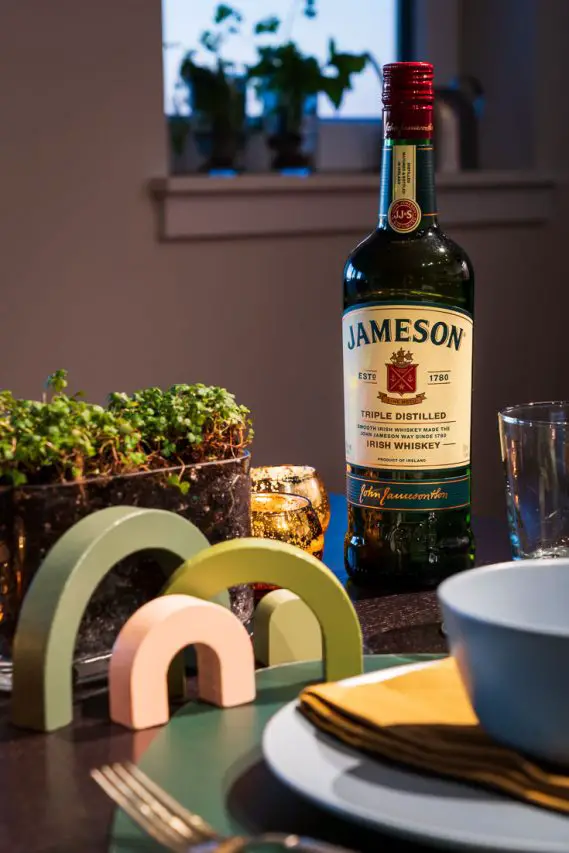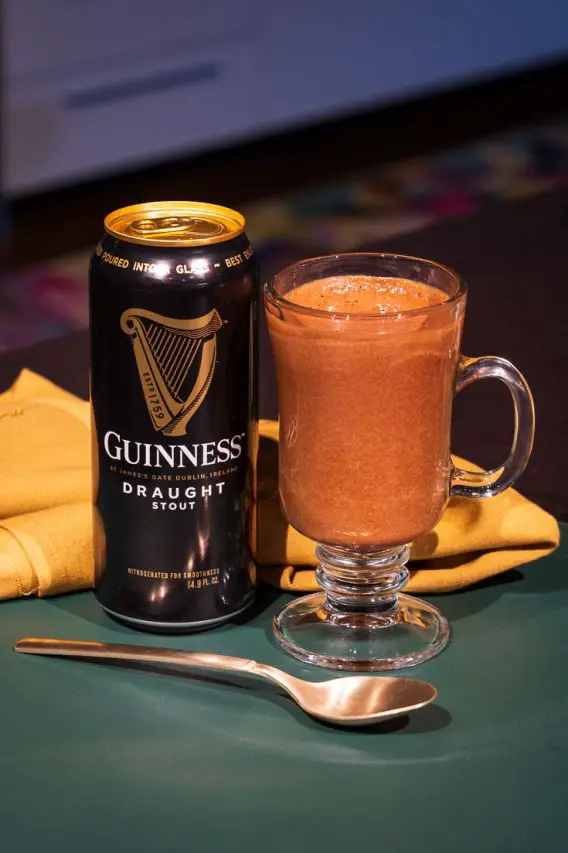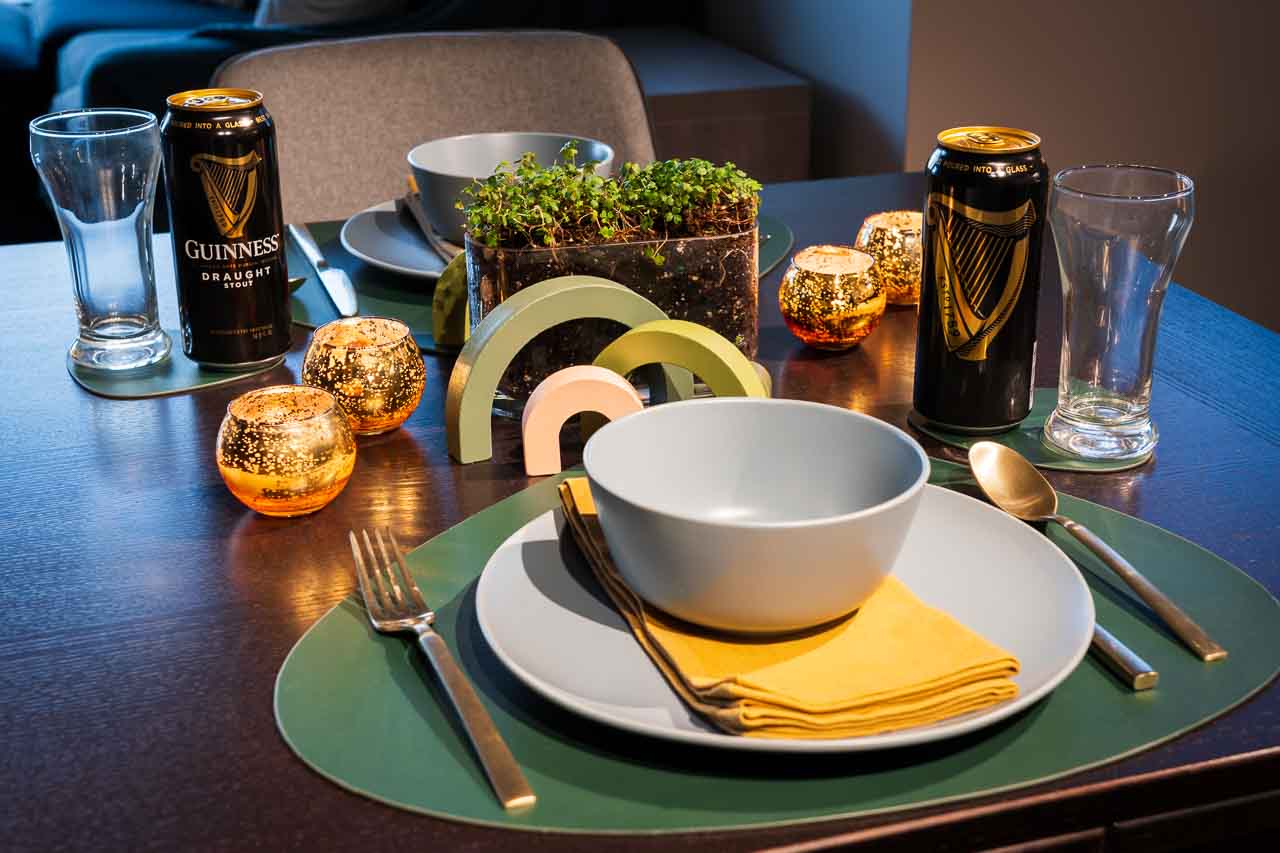St Patrick, Patron Saint of Ireland, is honoured annually on St Patrick’s Day, the 17th March. St Patrick’s Day originated as a Catholic feast day around the 9th century CE and continues today as a secular celebration in Irish communities the world over. Celebrating St Patrick’s Day is simple – just follow this guide.
Table of contents
- What is St Patrick’s Day and why is it celebrated?
- Celebrating St Patrick’s Day – the traditional way
- Celebrating St Patrick’s Day – the modern era
- Where is St Patrick’s Day a holiday?
- St Patrick’s Day symbols and motifs
- How to host a St Patrick’s Day dinner
- Finally: an Irish blessing for St Patrick’s Day
What is St Patrick’s Day and why is it celebrated?
St Patrick wasn’t actually Irish! In fact, he was born Maewyn Succat in Britain during the late 4th century CE. The story goes that at age 16, young Maewyn was abducted from his father’s house by Irish raiders. He was taken to Ireland and made a slave for six years before he was able to escape back to Britain.
Maewyn’s writings tell us that he thought his enslavement was punishment for his lack of faith and that throughout this time his religious beliefs were strengthened. It is said he even began to believe that he had been called by God to convert the pagan Irish to Christianity.
Taking the name Patricius or Patrick, which is derived from the Latin meaning ‘son of a noble father’, he became a Catholic missionary. He returned to Ireland and travelled around converting the Irish to Christianity, and performing baptisms and confirmations.
St Patrick’s Day originated as a Catholic feast day during the 1630s, on the anniversary of Patrick’s death – generally accepted to be March 17. He was never formally canonized by the Catholic Church, but St Patrick he became to his adoring public.
Celebrating St Patrick’s Day – the traditional way
As a feast day, St Patrick’s Day was more like a Holy Day of Obligation. Families would put on their Sunday best, pin shamrocks to their lapel (more about that in a minute) and attend church. Afterwards, they would have a special dinner at home. As most Irish people were of very modest means, this was probably something like boiled bacon and cabbage with a side of Colcannon or similar.
People abstained from drinking on this Day and it was even illegal for pubs to open on St Patrick’s Day until the 1970s. As St Patrick’s Day sometimes falls during Lent and the temptation to have a few alcoholic beverages was thought to be too great.
In place of a beer or a pint of Guinness, people would more likely gather for folk music and dancing. There might have also been some friendly horse racing or Gaelic football played among neighbours – particularly in rural areas.
Celebrating St Patrick’s Day – the modern era
The Saint Paddy’s Day we know now is mostly a secular celebration that largely evolved among Irish diaspora in North America and spread throughout other global communities with strong Irish heritage.
Lent is not much of a concern, and booze is expected. Faux Irish cuisine or substitute foods are often eaten. For example, corned beef and cabbage is eaten in the US, in place of traditional boiled bacon and cabbage.
There are a few different claims on who held the first St Patrick’s Day parade. Was it New York City’s 1762 parade of Irish soldiers (from the British Army) or did Boston pip them at the post in 1737 with its show of Irish colonial pride? Wait! It might have actually been in St Augustine, Florida in 1601 (the town’s founder Don Pedro Menendez de Aviles was a Spanish Celt). Any way you look at it, the first St Patrick’s Day parade was most certainly not in Ireland.
Where is St Patrick’s Day a holiday?
St Patrick’s Day is a public holiday in both the Republic of Ireland and Northern Ireland, along with the Canadian province of Newfoundland and Labrador, and the Caribbean island of Montserrat (a British territory).
St Patrick’s Day symbols and motifs
Shamrock – The shamrock is a general term for several plants with three-leaved foliage like clover. Legend says that St Patrick used a three-leaf clover to represent the Holy Trinity, in his teachings of Christianity to the Irish. Hence a clump of shamrocks was traditionally worn on St Patrick’s feast day.
Green – St Patrick was traditionally represented by the colour blue. However, the colour of his trusty teaching aid, the shamrock, overtook in popularity. Green also became associated with Ireland generally through the 1600s and was strengthened during the Irish Rebellion of 1798.
Celtic Cross – Some also propose that St Patrick contributed to the design of the Celtic Cross. Though it is unlikely that he came up with the idea, he and his fellow missionaries may have used the combined cross and circle shape in their teachings, bringing together symbols of Druid pagan religion and Christianity to aid in conversion.
Beyond these specific symbols associated with St Patrick, you might find many general Celtic motifs are used in St Patrick’s Day celebrations given it is also a show of national pride. Leprechauns, gold, rainbows, Celtic crosses, the Tara brooch, Celtic knotwork and of course the national emblem—the harp—all examples.





How to host a St Patrick’s Day dinner
St Patrick’s Day table décor
I’ve created a simple, modern table design:
- Contemporary green placemats and gold napkins
- Brassy flatware for a touch of “Leprechaun gold”
- Little clover plants from my local nursery, repotted into an oval vase I picked up at my local Goodwill store
- These cute, green, nesting rainbows which can mark table settings or be arranged as part of your centrepiece
Don’t feel pressured to buy something new: decorate with items you might already own; visit your local thrift store; pick greenery from your garden – there are lots of ways to keep your St Patrick’s Day dinner affordable.
St Patrick’s Day dinner menu
I’ve combined traditional and contemporary items in my St Patrick’s Day menu and offered up some alternatives to suit different palettes. Kevin Dundon is my go-to for contemporary versions of traditional Irish dishes and his recipes are easy to find on the internet. I’ve linked a few here.
Drink
An Irish whiskey such as Jameson, a pint of Guinness or even Kilkenny would be most customary for those imbibing. For the kids and non-drinkers, select a botanical mocktail or green-tinged punch in keeping with the theme (at least from a colour perspective).
First course
Begin with a traditional, Irish seafood chowder or a fancy smoked salmon gateau.
Or
Vegetarians might prefer Potato and Leek soup.
Main course
Try an Irish lamb stew (vegan version here) with a side of soda bread to mop up the delish juices.
Or
Alternatively, a Dublin Coddle (here’s a vegan version) with a classic potato dish such as Colcannon or Champ on the side.
Dessert
Finish up with an Irish Coffee, Apple Cake, Guinness Chocolate Mousse or a Barm Brack – a dense, spicy fruit cake.
Cheese fans may prefer to sample a selection of the Emerald Aisle’s finest dairy instead, with a selection of:
- Dubliner, Cáis na Tíre or alternative Irish hard cheese
- Irish Cheddar, Gubbeen or other semi-soft Irish cheese
- Cashel Blue (Ireland’s blue cheese) or Wicklow Blue (an blue veined Brie)
- A specialty cheese such as Carhill’s Farm Porter
- Dried fruit such as apricots, apple or pear
- Fresh berries such as blackberries, strawberries or raspberries
- Nuts
- Irish oat crackers
- Guinness brown bread or some leftover soda bread
Finally: an Irish blessing for St Patrick’s Day
May the Irish hills caress you.
May her lakes and rivers bless you.
May the luck of the Irish enfold you.
May the blessings of Saint Patrick behold you.
For more international holiday celebrations like Mardi Gras and Burns Night, see my Entertaining page.
Peace, love & inspiring travel,
Madam ZoZo

